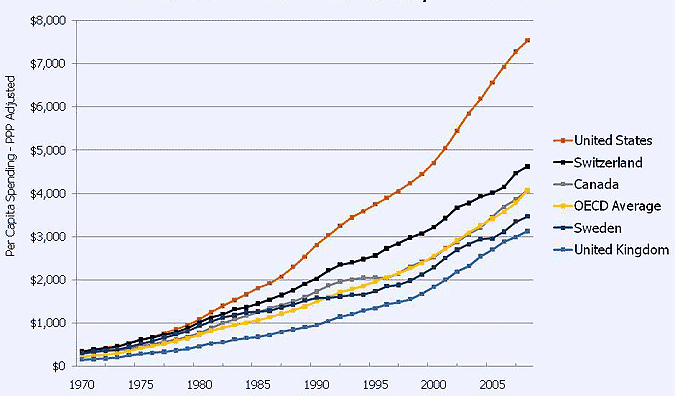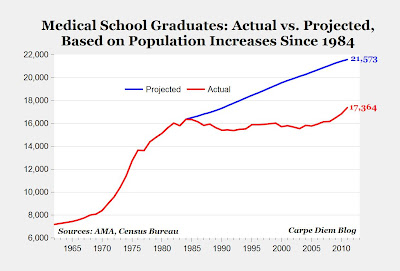Healthcare costs in the US are really high relative to other countries. In 2008, the US spent over $7,500 per person on health care, nearly twice the amount of a group of similar OECD countries. As a result, the US spends 16% of its GDP on healthcare, more than 5 points higher than any other country. This poses a huge set of problems for people in the US. Among those, family budgets are being drained into insurance premiums and government expenditures on healthcare have risen rapidly and unsustainably. Getting these costs under control is the only non-terrible solution to fixing the coming Medicare shortfall.

There are all sorts of discussions about why similar procedures in the US cost so much more than other countries. One issue not usually raised in these discussions is doctors’ compensation. Peter Ubel gives numbers on differential doctor pay in a recent post at Forbes:
Primary care physicians in the United States make $186,000 per year on average versus $131,000 in Germany. Orthopedic surgeon pay ranges from a high of $442,000 in the United States, to $324,000 in the UK, to a relatively parsimonious $187,000 per year in Australia, that according to analysis by the United Health Group Foundation.
Ubel does not give an explanation for America’s outsized doctor salaries, but there is a strong case that they are largely driven by doctor supply constraints put in place by the cartel-like American Medical Association. The full argument about doctor cartels is best provided in Dean Baker’s freely available book The Conservative Nanny State: How the Wealthy Use the Government to Stay Rich and Get Richer. Mark Perry also has a good run down of the point. Really though, all one needs to do is look at a few graphs to see the obvious supply problem.


This doctor shortfall is not caused by too few people trying to become doctors. Large numbers of students are kept out of medical schools each year by the AMA. This artificial supply constraint — which has created a medical school graduation gap of over 4,200 doctors per year — may not entirely explain the high compensation of US doctors, but it surely explains some of it. Ultimately, consumers and the government pay the price of this protectionist behavior.